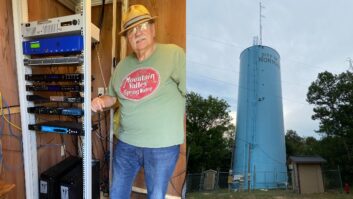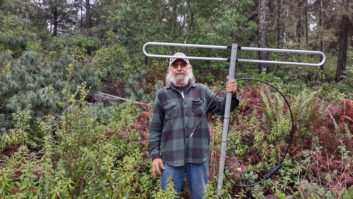
The tool uses Longley-Rice modeling and terrain mapping data to provide coverage maps of up to 10-meter accuracy in the U.S.
An accurate computer model of a station’s coverage is important, if not critical, in deciding whether you can make facility changes to help the programming and sales departments meet their goals.
Perhaps your transmitter site was chosen when distribution of the local population was different than it is today. Pastures have evolved into condo complexes; wooded areas have given way to strip malls. Your audience and revenue sources have shifted while your transmitter location has remained the same. Should you raise your antenna height? Increase your power? Move your site?
Another reason for a good propagation tool is that technologies such as digital television, HD Radio, RDS and transmitter GUI interfaces have put even more of a premium on STL bandwidth to and from a transmitter site.
Preliminary evaluation
A presentation by Chuck Kelly, director of sales at Nautel Ltd., is planned for Tuesday during the Broadcast Engineering Conference of the NAB Show. The title is “A Free Online VHF/UHF Propagation Tool for Technical and Non-Technical Users.”
“Our goal in developing this tool was to put easy-to-use and easy-to-interpret RF coverage and path analysis in the hands of station personnel for the preliminary evaluation of transmitter sites and tower height, antenna gain and TPO tradeoffs,” Kelly said.

In addition to coverage mapping, the system can be used to make an STL path analysis including a path profile showing Fresnel zone clearance and a path fade margin budget. In addition to selecting an optimum transmitter site, there are considerations such as antenna height above ground and number of bays vs. transmitter power. The ability to model these prior to making an investment is valuable.
Further, given the increasing need to transport audio and data to the transmitter site as well as diminishing availability of analog telephone lines, STLs are a popular alternative. They offer greater bandwidth, are under the control of the station and are generally more reliable. The proper selection of antenna height is critical at both ends of the STL path. Kelly says the tool allows the user to display a path showing free space and Fresnel Zone clearances. It also calculates a path budget and fade margin.
The tool employs Longley-Rice ITM terrain method.
“The Longley-Rice ITM is well accepted and covers a wide frequency range that is ideal for FM/STL/TV use.” One of the most important advances in terrain data accuracy was the release by NASA and others of Shuttle Radar Topography Mission data online. This terrain data was gathered during an 11-day mission aboard the space shuttle Endeavour in February of 2000.
Another valuable feature in the tool is population count that can be compared against various runs of different transmitter sites and antenna height selections.
Nautel says the tool — found at rftoolkit.net— is not a substitute for an experienced engineering consultant, but it can help a station obtain approximate general answers quickly and at no cost.












